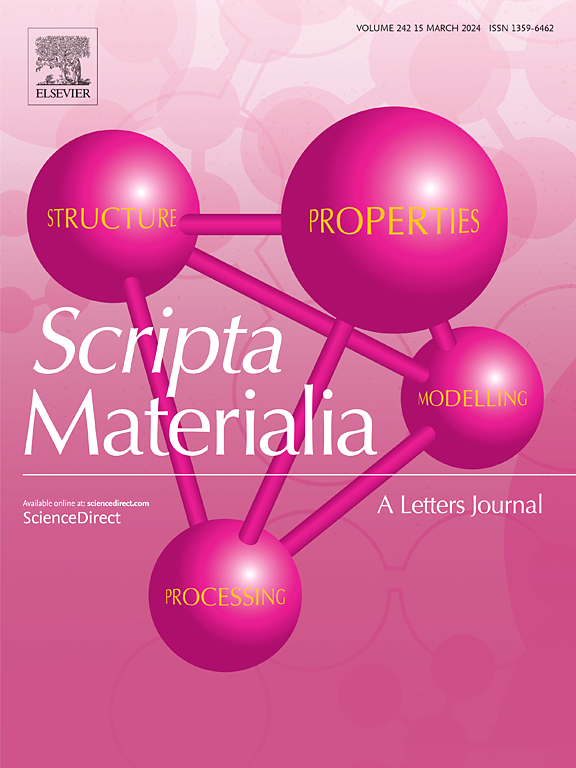A novel cross-lamellar deformation mechanism through α2 ↔ γ bidirectional phase transformation in a γ-TiAl alloy
IF 5.3
2区 材料科学
Q2 MATERIALS SCIENCE, MULTIDISCIPLINARY
引用次数: 0
Abstract
Cross-lamellar deformation is hard to be activated because of the obstruction of α2/γ interface to dislocations in the lamellar TiAl alloy. In the present work, continuous shear across the lamellar interface was achieved through twinning and α2 ↔ γ bidirectional phase transformation during high-temperature tensile deformation. The {201} α2 twins were induced by the stress concentration at the tips of γ twins in adjacent lamellae and propagated through the nanoscale (α2 + γ) lamellae (γ → ), followed by the nucleation and growth of γ phase inside α2 twins ( → γ). The existence of Blackburn orientation relationship between α2 twin and γ inside it, as well as the Al-rich stacking faults in α2 twins, provide strong evidence for this bidirectional phase transformation. These findings offer an innovative understanding for the coordinated deformation of (α2 + γ) lamellar structures and provide a new sight for improving the deformation capacity of TiAl alloys.

γ- tial合金中α2↔γ双向相变的新型跨层变形机制
由于α2/γ界面阻碍了层状TiAl合金位错的发生,使得层状TiAl合金的跨层变形难以激活。在本研究中,在高温拉伸变形过程中,通过孪晶和α2↔γ双向相变实现了跨层状界面的连续剪切。α2孪晶由相邻片层中γ孪晶尖端处的应力集中诱导生成{202 - 1}α2孪晶,并通过纳米级(α2 + γ)片层(γ→α2T)进行扩展,随后α2孪晶内部γ相形核长大(α2T→γ)。α2孪晶与γ之间存在Blackburn取向关系,α2孪晶中存在富al层错,为这种双向相变提供了有力证据。这些研究结果为(α2 + γ)片层组织的协同变形提供了新的认识,并为提高TiAl合金的变形能力提供了新的思路。
本文章由计算机程序翻译,如有差异,请以英文原文为准。
求助全文
约1分钟内获得全文
求助全文
来源期刊

Scripta Materialia
工程技术-材料科学:综合
CiteScore
11.40
自引率
5.00%
发文量
581
审稿时长
34 days
期刊介绍:
Scripta Materialia is a LETTERS journal of Acta Materialia, providing a forum for the rapid publication of short communications on the relationship between the structure and the properties of inorganic materials. The emphasis is on originality rather than incremental research. Short reports on the development of materials with novel or substantially improved properties are also welcomed. Emphasis is on either the functional or mechanical behavior of metals, ceramics and semiconductors at all length scales.
 求助内容:
求助内容: 应助结果提醒方式:
应助结果提醒方式:


